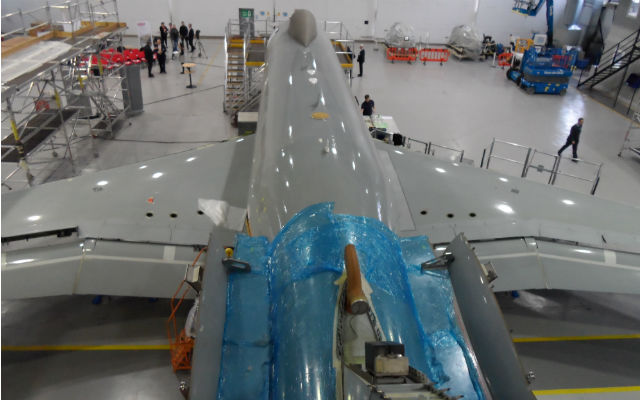The UK Royal Air Force will continue to operate its entire fleet of Raytheon Sentinel R1 surveillance aircraft until at least March 2017, despite plans that should have seen one example retired two months ago.
November 2015's Strategic Defence and Security Review (SDSR) indicated that one of the five-strong fleet would leave service in September 2016, but this has now been pushed back to March next year at the earliest.
In addition, Raytheon has now received a £131 million ($159 million) support contract, which will see the remaining four Sentinel aircraft continue in operation until 2021, extended from the previous retirement date of 2018.
However, a decision will be taken in March 2017 whether additional funding can be found to also keep the fifth aircraft in service over the same time period.
Raytheon is currently performing heavy maintenance on a second of the Bombardier Global Express-derived surveillance aircraft, which sees the airframe completely stripped down after 10 years of operation.
This took 12 months to accomplish on an earlier Sentinel, but Raytheon hopes this can be cut to eight months on the current example, with the aircraft scheduled to be returned to the service's 5 Sqn, based at RAF Waddington in the east of the country, by 30 January.
Subsequent aircraft will take six months to overhaul, including the fifth aircraft should funding decisions support its continued operation.

Aircraft ZJ691 undergoing its 8C maintenance check at Broughton
Beth Stevenson/FlightGlobal
Raytheon is hoping that it will be awarded an additional contract by the Ministry of Defence to upgrade the radar processors on the aircraft. If this takes place soon it could be performed at the same time as the heavy maintenance checks, says John Craib, business development executive at the company.
Sentinel was originally due to be retired in 2015 under the mandate of the 2010 SDSR, but incremental extensions have kept it in service.
While both Raytheon and the RAF have praised the capability and associated decisions to extend it, the lack of long-term planning surrounding the programme has led to obsolescence issues with the fleet.
“It gets harder to support an aircraft when it gets to the end of its life when you don’t know where it is going in the future,” Craib says.
“The aircraft itself – with the addition of the [radar upgrade] – could go out beyond 2025,” he adds.
Meanwhile, last year's SDSR promised that the RAF's Raytheon Shadow R1 signals intelligence aircraft – derived from the Beechcraft King Air 350ER – would continue in operation until 2035, with three more aircraft added to the fleet. Although Raytheon has yet to receive a contract for this work, it says this could take place in March next year.
This has not yet been contracted, Raytheon says, but a decision on this could be made in line with ABC 17.
Source: FlightGlobal.com










































